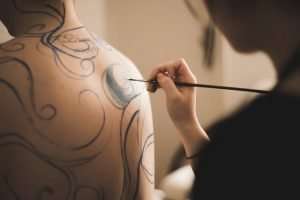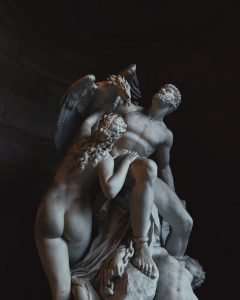If you want to paint like a professional, you need to learn how to mix colors. The following information is for artists at all levels, from absolute beginners to the most advanced professionals. It will help you understand color mixing and color theory, and give a simple method for creating your own color palette.
I will start with a brief introduction to mixing colors. I’ll tell you about the color wheel, primary colors, secondary colors, tertiary colors, complementary colors, split complimentary colors and analogous colors. I’ll also include some tips on how to mix paints. I hope this article will give you the information that you need in order to begin mixing your own colors.
Tint: Tint is a watered-down version of its parent color. Mixing one color with white creates a tint of that color. Tints are always lighter than their parent hue.
The great thing about tints is that they allow artists to make a hue lighter or darker without changing its value (lightness/darkness). When you add white to a hue, it lightens the tone of the hue; when you add black it darkens it. So by using tints instead of using white or black directly, an artist can get more subtle results. For example, if an
Color is not something new. There are many ways to determine color and color combinations. Color theory is a science that takes into consideration the way human eyes perceive colors, how colors interact with each other and how these factors influence the look of artwork.
Mixing colors can be tricky. It is essential to know the basics of color mixing such as primary, secondary and tertiary colors, complementary colors and a few others.
Color can be applied in many different ways: as solid blocks of color, as a mixture of two or more colors, as gradients from dark to light and it can also have a transparent effect. The possibilities are endless when it comes to applying color on paper.
The art of mixing colors can offer you a stunning palette for your work if you are willing to spend some time learning about color theory, experimenting with pigments and trying out different techniques.
In the last part of our color mixing series, we went over how to mix your own color palette using the basic hues. In this section we will go over how to use the hue, value and intensity to create a custom palette that is perfectly suited for you.
What is an Art Palette?
An art palette is a group of colors that are used in creating art. Most people think that they are just the primary colors and their derivatives like blue, yellow-green and red-violet. While these are all necessary in creating a full color palette, they can be expanded upon with gray scale color mixing and adding neutrals to the mix.
Art Palette Tips:
1) Think neutrals are boring? They aren’t! The neutral colors are often what gives your artwork depth and richness. It takes skill to learn how to use them but once you do, you won’t regret it.
2) Varying intensities of the same color can give your work a whole new level of sophistication as well as drama. I will show you how to do this later on in this post.
3) Take advantage of your primary colors and play around with their complementary colors as well as other tertiary colors (those located between two primary or
“The color wheel” is a concept that has been around for centuries, but it’s only recently become common knowledge. This is because until recently, most paintings and drawings were done in natural light rather than artificial light. Artificial light was limited to candles or gaslight. Today, we use electric lighting which allows us to see a much wider spectrum of colors than we can actually make with traditional pigments.
There are three main components to the color wheel: primary colors, secondary colors, and tertiary colors. The primary colors are red, blue and yellow; the secondary colors are green, purple and orange; the tertiary colors are made by mixing a primary color with a secondary color (i.e., blue-green, red-orange, yellow-green). Each of these hues is made up of two tints and two shades. A tint is created by adding white; a shade is created by adding black.
The easiest way to get started incorporating color theory into your art is to pick out a few basic shades and tints of each hue. For instance, if you pick blue as one of your primary colors, you might choose bright blue as one shade and navy as the other shade. Then you’d pick out the third primary color: red.
The first rule to break when choosing colors for your paintings is the one that tells you to use color theory; forget about complementary contrast, split-complementary, triadic, and all that other stuff. The second rule is to forget about how the colors are supposed to make you feel.
The third rule is to forget about how the colors relate to each other based on their position on the color wheel.
The fourth rule is to throw away your color wheel. That’s right, I’m telling you to burn it, smash it into a thousand tiny pieces, and then eat those pieces with a side of fava beans.
You’ll thank me later.
Have you ever wondered how to mix colors? How to paint a sunset or the Grand Canyon or a lion’s mane? Look no further.
This post will give you the basics. You can use them to create your own colors, and then adjust them through the addition of white or black or by changing the temperature with gray.
The color wheel is divided into three primary colors (red, yellow and blue) and their opposites on either side of the wheel (green and violet). An equal mix of any two primary colors creates one of the secondary colors: orange, green and purple.
Different painters use different color names; for example, yellow-orange is also known as red-orange. All colors can be made by mixing the primary colors, but you can also mix secondary colors together in order to get more than six basic colors.
Paintings can be created by following a few simple techniques. While this would be a rather long process for any new artist to undertake, it is essential understanding for anyone who wants to make money from their artwork.
Flat color is the easiest way to paint your pictures. This means that you need to get hold of a color wheel and use it as your guide.
The first thing you will need to do is to find out which colors go together well. If you look at any of the paintings in museums or galleries, they are all done with a limited palette of colors. That means that there are certain combinations of paint that work better than others, but finding those combinations is not at all easy because you need to have an idea of what sort of painting you want to do first. If you have an idea of what sort of painting you want to do, then you can find out which colours go best together. If on the other hand, you don’t know what sort of painting you want to do, then finding a good color palette will be much harder and may require quite a lot of experimenting.
A color wheel can be used as your guide when mixing your paints because this shows all the different shades and tints and tones that can be made using just


